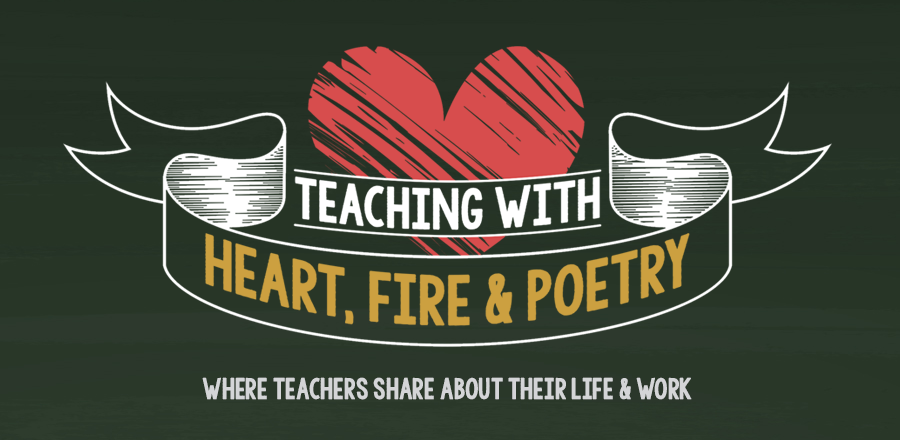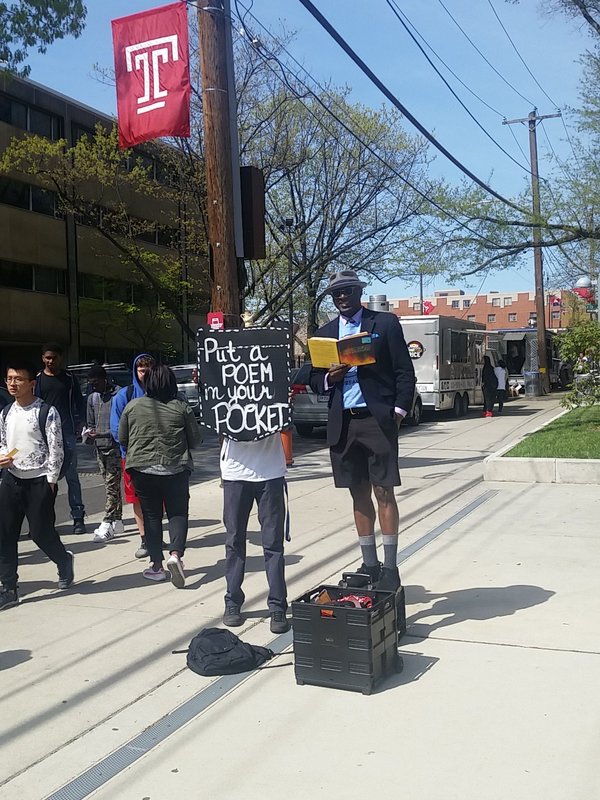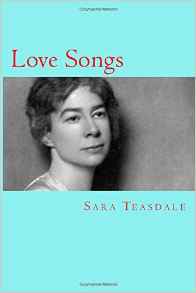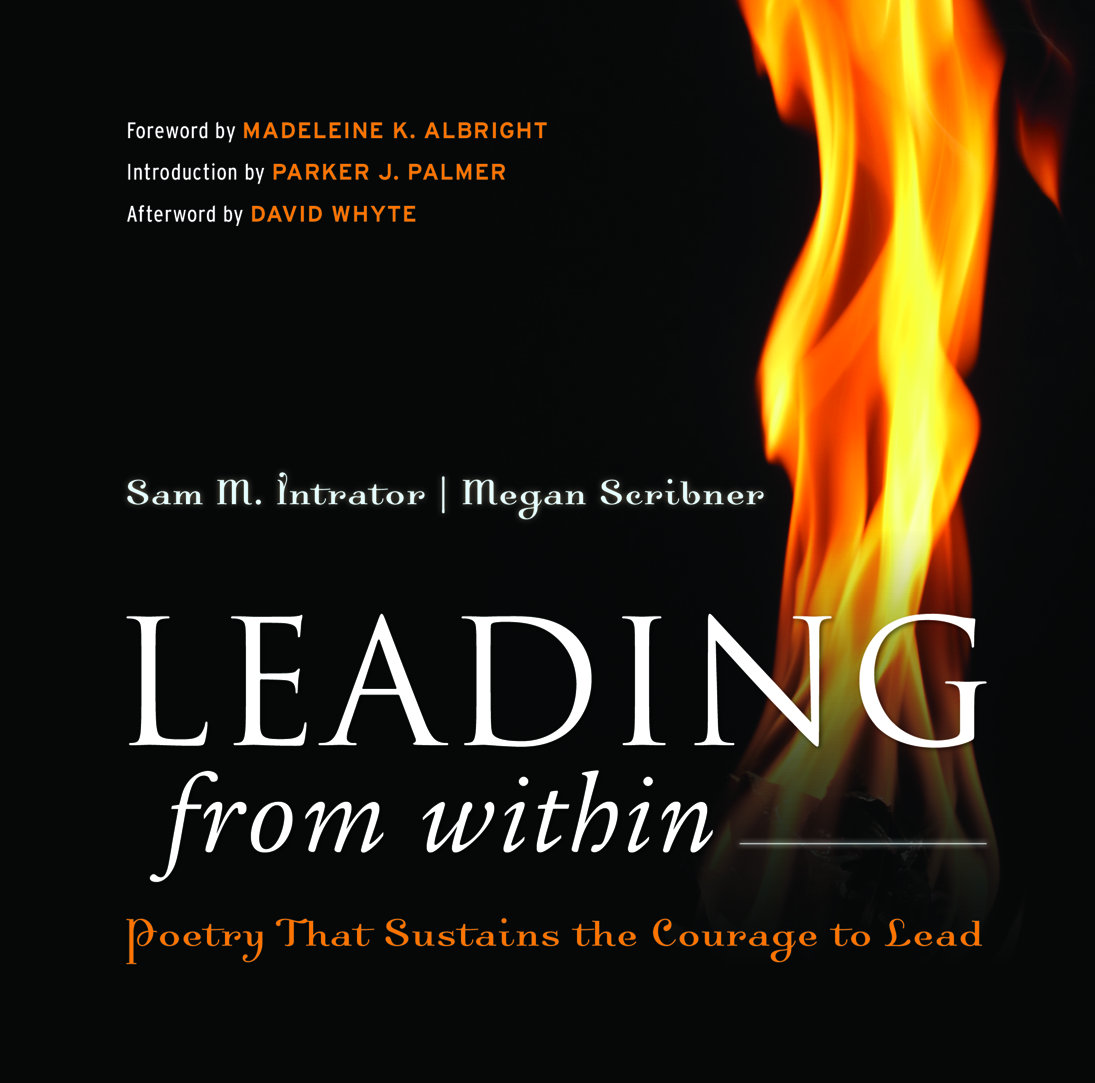 In this week’s book review section, the New York Times published “The Favorite Poem Project.” They asked 25 noted writers (such as Stephen King & Ta-Nehisi Coates) to select a favorite poem and offer a short reflection on what the poem meant to them. It is a compelling read and resembles the concept anchoring our own trilogy of of poetry books (Teaching With Fire, Leading from Within, Teaching with Heart). It also invited us to recall how we initially began our project.
In this week’s book review section, the New York Times published “The Favorite Poem Project.” They asked 25 noted writers (such as Stephen King & Ta-Nehisi Coates) to select a favorite poem and offer a short reflection on what the poem meant to them. It is a compelling read and resembles the concept anchoring our own trilogy of of poetry books (Teaching With Fire, Leading from Within, Teaching with Heart). It also invited us to recall how we initially began our project.
In 2002, Megan Scribner and I were brought into a conversation that was happening between Tom Vander Ark – who was then heading up the Gates Foundation Initiatives in education – and Parker J. Palmer of the Center for the Courage to Teach. Tom and Parker had connected and begun a far-ranging discussion about the role of poetry as a source of insight and power in their lives and work. Megan and I – who had written together for years – joined the conversation where the idea of producing a poetry anthology that would provide educators with solace and guidance took shape and we started to imagine what this might be.
“Find a poem or a song lyric that you turn to for meaning, guidance and inspiration. Bring your poem/lyric to class along with a one-page commentary explaining how that poem matters to you.”
The assignment was magic. It invited teenagers to put into words why they would listen to “Run Around” by Blues Traveler 18 times in an evening. It provided them a forum to explain why those epic lines
Two roads diverged in a wood, and I—
I took the one less traveled by,
And that has made all the difference”
spoke to their sense of wanting to influence the direction of their life and identity. It was an assignment that achieved what my good and wise friend and colleague, Jim Burke, says, “Text creates context for conversation.”
The text – normally the foreground in a high school English classroom – was flipped to the background. What mattered most was how the poem stirred an inner conversation, shone a light on something meaningful, or helped lift up or clarify a sense of what is or what is possible.
Megan and I forged ahead with this idea and we opened it up as a wide and broad call to educators. As we wrote in Teaching with Fire, “We asked teachers to send us these cherished poems. We asked them to write of their special relationship to the poems, to describe how they turn to them for companionship, solace, and wisdom. Through electronic mail, networks and word of mouth, we spread the word that we were seeking poems that mattered to teachers.”
As in the N.Y Times piece, it is fascinating to read why individuals select a poem and how that poem matters to an individual. The poem and commentary bound together provide a glimpse into to the power of poetry to sustain, instruct, inspire and guide.
The critic Edward Hirsch wrote that “Poetry is a means of exchange, a form of reciprocity, a magic to be shared, a gift.” Both the NY Times piece and the trilogy of poetry books seek to shine a light on the “magic” that is conjured when a reader and poem come together.
— Sam Intrator
Co-editor Teaching with Heart, Leading from Within and Teaching with Fire






Megan Scribner
January 3, 2016 5:35 pmWhat’s your favorite poem? Share here or write up a longer reflection to post on the blog. Need some help with this? Contact me at teachingwithheartfirepoetry@gmail.com. Through the three poetry books, I’ve helped hundreds of teachers write about their teaching. Please reach out to me and I can help you frame and draft your idea or story. I look forward to hearing from you! Cheers, Megan